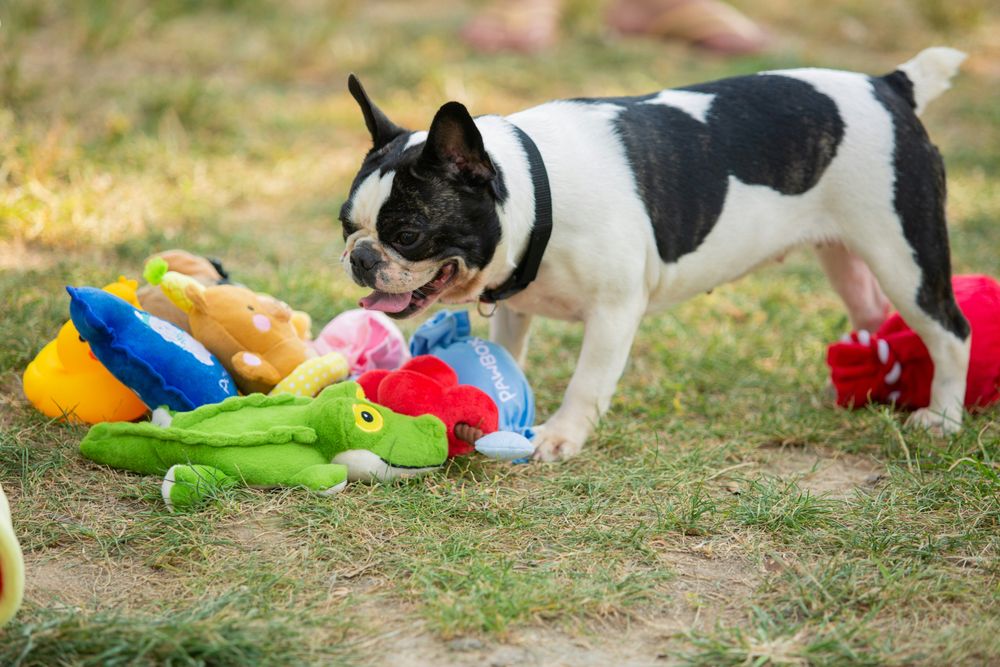
What Color Toy Should You Choose for Your Dog? Tips Backed by Experience
Choosing toys for your dog can be a fun part of pet parenting, but if you’ve ever noticed your furry friend ignoring one toy while obsessing over another, color might be playing a bigger role than you realize. Understanding how dogs see colors and what draws their attention can help you pick toys that truly engage your pup, making playtime more joyful and rewarding for both of you.
Here’s a story to start: The very first toy I bought my dog was a bright green turtle. But strangely, he didn’t seem to care for it much. Later, I gave him an orange fox toy, and suddenly, it became his absolute favorite! What explains this surprising preference?
Dogs See Colors Differently Than Humans
The answer lies in how dogs perceive color. Unlike humans, who have three types of color-detecting cells (cones) in their eyes, dogs have only two. This means dogs mostly differentiate shades of blue and yellow but struggle with reds and greens.
So that bright green turtle probably looked dull or muted to my dog—more like a gray or brown shade—making it less visually interesting. Meanwhile, the orange fox toy, combining red and yellow hues, probably appeared as a brighter, more noticeable tone closer to yellow—a color dogs can see clearly.
What Colors Are Best for Dog Toys?
Blue and Yellow Lead the Pack
Most experts agree that blue and yellow toys are easiest for dogs to see and prefer. Blues stand out brightly in grassy parks or dirt, while yellows can provide excellent contrast indoors or outdoors. When buying a ball, chew toy, or frisbee, those are usually the safest bets for your dog’s visual comfort and interest.
Orange Can Be a Winner Too
Orange is interesting because it combines red and yellow shades. While pure reds tend to look like dull browns to dogs, the yellow component in orange can make it more visible and engaging. This likely explains why my dog loved that orange fox toy despite it looking less vibrant to me.
Avoid Red and Green Toys for Visibility’s Sake
Green and red toys tend to blend into many natural environments dogs frequent, especially grassy areas, making them harder to spot and less stimulating visually. This can lead to frustration and disinterest.
More Than Just Color: Texture, Scent, and Sound Matter
While color plays a crucial role, dogs use multiple senses when deciding what’s fun and interesting:
- Texture: Soft plush toys, crunchy or squeaky toys, and rubbery chew toys all have unique sensations that dogs react to.
- Smell: A toy that carries your scent or a faint food smell can instantly become irresistible.
- Sound: Toys that squeak or crinkle add auditory stimulation that encourages play.
By combining an easily visible color like blue or yellow with appealing textures or sounds, you double the chances your dog will love a toy.
How to Pick Toys Based on Your Dog’s Habits and Preferences
Every dog is unique, so here’s how to tailor your toy choices:
- Active Fetchers: Bright blue or yellow balls or frisbees are ideal for clear visibility at a distance during outdoor play.
- Home Cuddlers: Plush toys in yellow or blue, combined with comforting textures, work well indoors.
- Chewers: Durable chew toys in highly visible colors like blue can keep your dog engaged and minimize frustration.
Pay attention to which colors your dog naturally prefers by offering several options and noting which toys get the most attention—and don’t be afraid to experiment beyond standard red or green choices.
Tips to Keep Toys Appealing Over Time
Replace faded toys: Dirt and wear reduce color brightness and visibility.
Rotate toys: Regularly swapping toys keeps your dog’s interest fresh and prolongs the life of each toy.
Combine toys: Layer on different textures, scents, and sounds with preferred colors to create multi-sensory fun.
Choosing the right color toy for your dog isn’t about style or matching your décor—it’s about seeing the world through your dog’s eyes and senses. Blue, yellow, and sometimes orange offer the best visibility and engagement. My dog’s puzzling rejection of his green turtle toy, paired with his passion for the orange fox toy, was a simple lesson in canine vision.
When you marry that insight with texture, smell, and sound, you’re set to make playtime the best time.